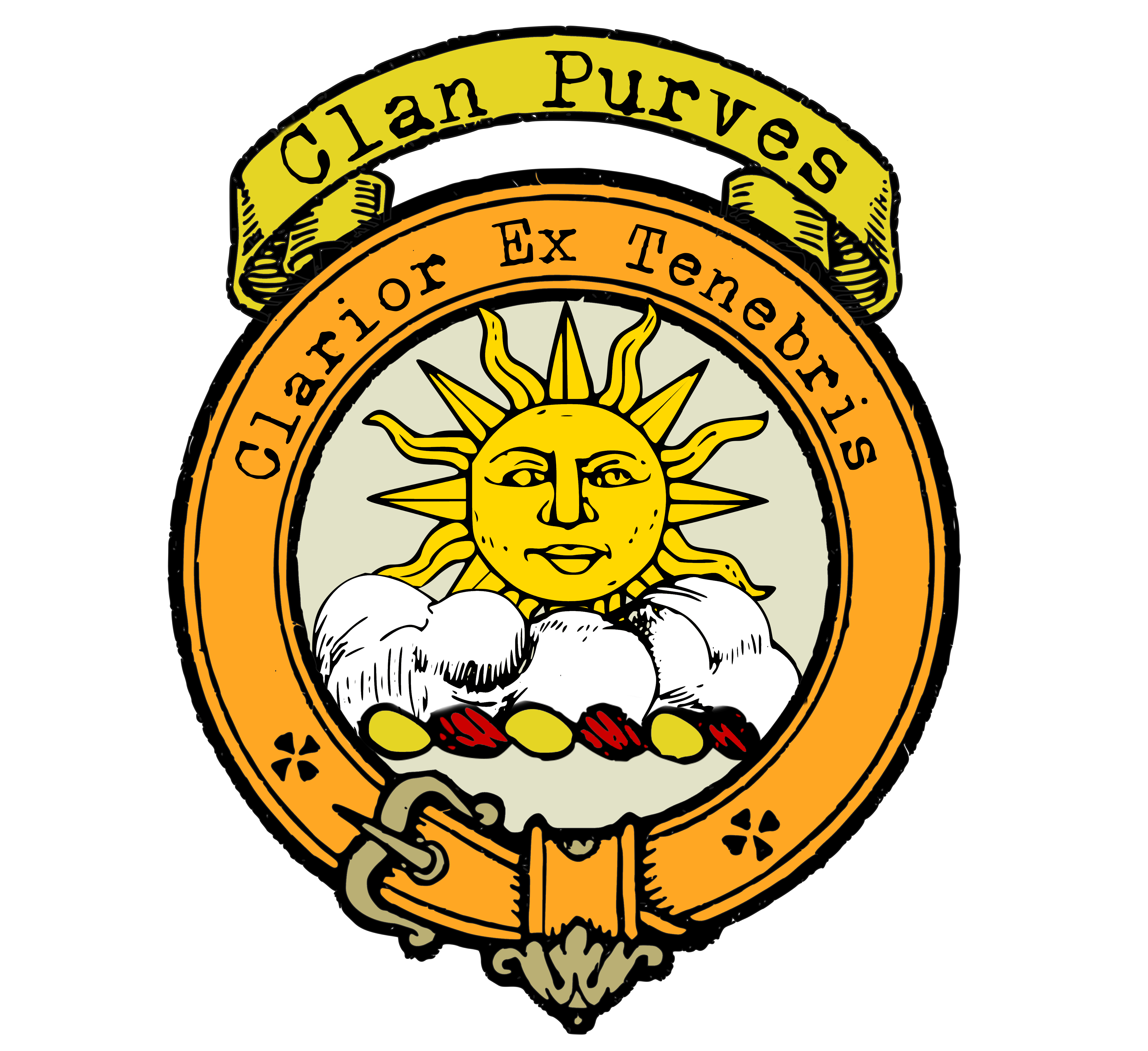Clan Purves
|
|
CREST: The sun issuing out of a cloud Proper MOTTO: Clarior ex tenebris TRANSLATION: Brighter from darkness VARIATIONS: N/A |
| The Purves clan’s history is deeply intertwined with the rugged and tumultuous Border region of Scotland. This region, marked by its fiercely independent spirit and often turbulent history, gave birth to many clans, each with its own distinct story.
The name Purves is believed to have been derived from the lands of Purveshaugh, where the family first settled in Berwickshire during the eleventh century. This region, nestled along the Anglo-Scottish border, was a hotbed of historical conflicts and shifting allegiances. Throughout the centuries, the Purves clan displayed unwavering loyalty and commitment to their homeland. William Purves of Mosspennoch made a historic grant of lands to Melrose Abbey between 1214 and 1249, underlining their early contributions to the church and local communities. One of the most significant mentions of the Purves clan can be found on the Ragman Roll of 1296. Here, William Porveys, a member of the clan, rendered homage for his lands in Peeblesshire to Edward I of England. This act was a reflection of the complex political dynamics of the time, as Scotland and England were frequently in conflict. Alan Purvays de Ercildon further etched the clan’s name into history by witnessing the confirmation of a charter by Patrick, Earl of March, in 1318. These historical records serve as a testament to the Purves clan’s enduring presence and contributions to the region. In the annals of Scottish folklore, Clan Purves is not without its quirks. Chambers’ Popular Rhymes offers a glimpse into the clan’s reputation with a parody that playfully remarks, “befa’ what e’er befa’, there’ll aye be a gowk in Purves-ha’.” While it may suggest a touch of humor at their expense, such rhymes are a testament to the clan’s enduring presence in the local culture. Sir William Purves, a member of the clan, left a lasting legacy with his publication in 1681. His work on the revenue of the Scottish Crown provides valuable insights into Scotland’s fiscal history. This book, reprinted in 1897, continues to serve as a valuable resource for historians and genealogists, connecting the modern world to the historical roots of Clan Purves. |
|
Citations:
|
|
Purchase @ Redbubble
Purchase @ Amazon.com
Purchase @ Amazon.co.uk

